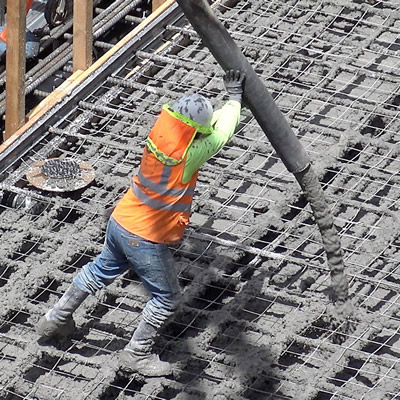B.C. launches a training strategy for LNG
The B.C. government wants to boost the number of apprentices and skilled tradespeople for anticipated LNG projects

Skilled tradespeople will be in demand for LNG projects and other areas in the coming years. — Stockbyte/Thinkstock photo
In April 2014, the government of British Columbia launched B.C.'s Skills for Jobs Blueprint: Re-engineering Education and Training. The government calls the blueprint a comprehensive strategy to re-engineer B.C.'s education and apprenticeship systems.
Shirley Bond, the Province's minister of jobs, tourism and skills training, said the blueprint was created for a number of reasons.
“By 2022, we are expecting nearly one million job openings in B.C., along with an increase in demand for more and higher skills,” Bond said. “More than 78 per cent of jobs will require some form of post-secondary education, and 43 per cent will be in trades and technical occupations.”
Bond said the Skills for Jobs Blueprint will ensure B.C. has the trained workers needed to fill the top jobs related to the development of liquefied natural gas (LNG) as well as other occupations that will be in demand in the future.
“It’s focused on changing culture and attitudes," the minister said, "and that includes getting more young people involved earlier in trades and technical training."
Stronger industry partnerships
As part of the launch of the Skills for Jobs Blueprint, the government also released the final results of the review of the Industry Training Authority (ITA). The report contains 29 recommendations that the government says will strengthen B.C.’s trades training system and increase the number of apprentices and certified tradespeople.
The recommendations include unifying cross-government decision-making; changing the composition of the ITA board to ensure stronger partnerships with industry and labour; increasing employer sponsors for apprenticeships by making it easier for employers to hire apprentices; and hiring more apprenticeship advisors to help employers and apprentices to navigate B.C.’s trades training system.
Adding up the LNG components
The blueprint is, in part, the government's response to an increased demand for apprentices and skilled tradespeople to work on LNG projects that are expected to be built in the province in the next decade. Pipelines will be constructed across the northern part of B.C. to connect the natural gas supply in the northeast with export facilities in the ports of Kitimat and Prince Rupert.
According to the Ministry of Natural Gas Development, at peak construction in 2018, 58,700 jobs are expected to be created. The numbers are based on the premise that five LNG plants will be built in B.C. between 2015 and 2024.
A typical LNG production, transmission and export project contains many large, complex and expensive components. They include: a liquefaction plant, which converts natural gas into liquefied natural gas by chilling it to -162 degrees Celsius; storage tanks to hold the atmospheric pressure for LNG before it is loaded onto an LNG carrier for shipment overseas; a power-supply station; a jetty, or marine terminal, which allows LNG carriers to dock near the export facility; pipelines that connect to the LNG export facility and to other pipelines that bring in natural gas from northeastern B.C.; and exploration infrastructure, such as drill rigs, that extract natural gas from the ground for transmission by pipeline to export facilities.
According to the ministry, LNG developers will likely build large portions of their facilities in other countries and then transport them to B.C. for final assembly, because Canada does not have the capacity to build them.
Tradespeople of all types needed
At the peak of construction of the LNG projects, most of the labour demand will be for tradesmen and tradeswomen. A wide variety of jobs are expected to be in demand: construction trades helpers and labourers, steam fitters and pipe fitters, welders, concrete finishers, transport truck drivers, carpenters, heavy-equipment operators, gas fitters, purchasing agents and officers, and crane operators.
As facilities start exporting, there will be growing demand for plant operators. Some occupations, such as truck drivers and heavy-equipment operators, will be required during both the construction and operating phases of activity.
Bringing in and training the labour force
The labour force of northern B.C., according to the government, is not large enough to meet the demand for workers that will be generated by LNG production, transmission and export. Furthermore, many of the workers in northern B.C. will need skills training and upgrading before they can work in the LNG industry. It says the Province's Skills for Jobs Blueprint will help to address the labour supply and skills challenges expected in B.C. in the future.
A related labour force challenge is attracting skilled trades, technical occupations and construction-related workers, with all the competition from other natural resource projects in B.C. and other regions of Canada such as Alberta and Saskatchewan. A statement from the government noted that "the natural gas sector will need to develop strategies to inform local residents of the industry’s career opportunities and skill requirements (as well as its) attractive pay and benefits."




